Dandelion
What is a Lion’s Tooth, you ask? It’s an abundant wildflower- many call it a weed- that has an interesting name origin.
The name of this particular nemesis of manicured lawns comes from the French, who originally called it dent de lion, or lion’s tooth. Somebody saw a resemblance in its coarsely toothed leaves with the fearsome beasts’s dental layout, so there you go. More recently, the French term for this flower is pissenlit, which roughly means “pee in the bed”, which refers to this plant’s diuretic qualities. An English folk name echoes this- “pissabeds”. Our modern name is a corruption of the original French word, rendered as “dandelion”. It was a bit of an odd journey through language to arrive at this name!
Dandelions are part of a large genus of flowers, though we typically call 2 species of worldwide distribution by this name- the Common Dandelion and the Red-Seeded Dandelion. They are extremely hardy and grow in any disturbed soil. This is partly due to the fact that it can fertilize its own seeds, and each plant is able to produce 5,000 seeds a year. They are commonly called weeds because homeowners don’t appreciate their presence on their lawns, nor do farmers like it when they show up in their fields. However, dandelions have a good side.
The flower is made up of many yellow ray florets
Personally, I think Dandelions look handsome, their bright yellow glow being very cheerful on sunny days. But there are other reasons to like them.
Dandelions are edible if you’re not allergic to them- you can eat the flowers, the young leaves make good salads and can be cooked like spinach; the roots can be ground into a coffee substitute, which is naturally caffeine-free. Roots can also be used as a vegetable in soups. The flowers can be made into wine. This plant has a good amount of vitamins and minerals, so it’s actually quite nutritious to consume. People have been eating this plant for thousands of years, for good reasons.
This hardy plant grew in a bit of soil between twin tree trunks
The flowers are a very important early source of nectar and pollen for bees as well as some butterflies and moths. So you can rationalize your yellow-blooming yard as nature-friendly. Be sure to let your neighbors know 🙂
A Cabbage White Butterfly enjoys a Dandelion in the spring
Dandelions were widely used in folk medicine as a tonic for kidney and liver ailments and as a diuretic. Supposedly the milky sap is a mosquito repellent and also was a treatment for warts.
The classic seed head, ready to disperse seeds on the wind
This prolific plant has also been made into dyes, making a positive out of its tendency to stain clothes. Dwell on the good things!
One thing you might notice about Dandelions- they are year-round flowers. They are certainly most abundant in the warm weather, but if you keep an eye out for them, you’ll see the occasional one even in winter. Now that’s a sight to keep your spirits up until spring.


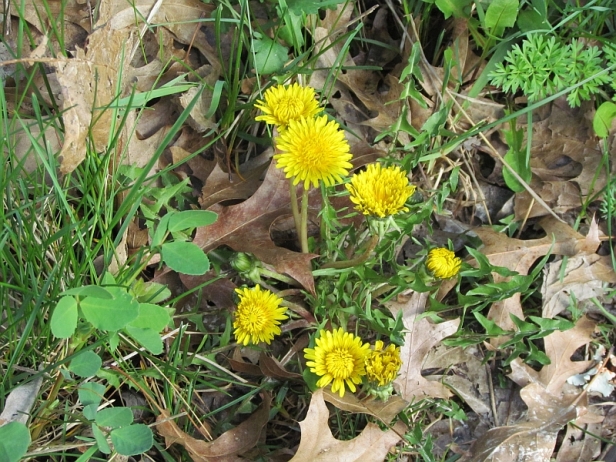
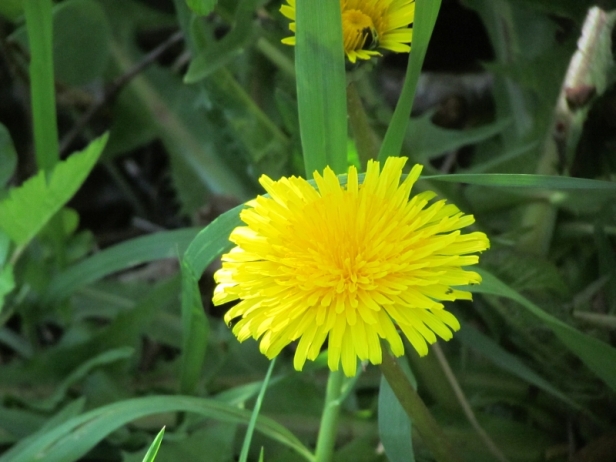
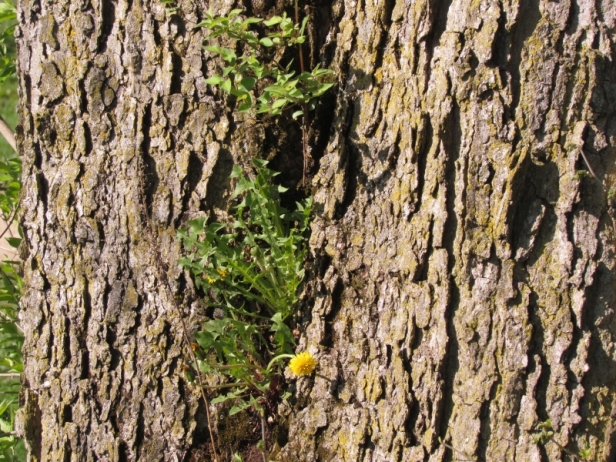
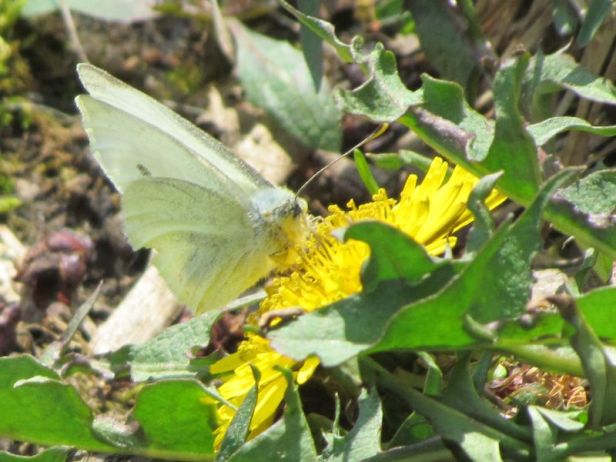
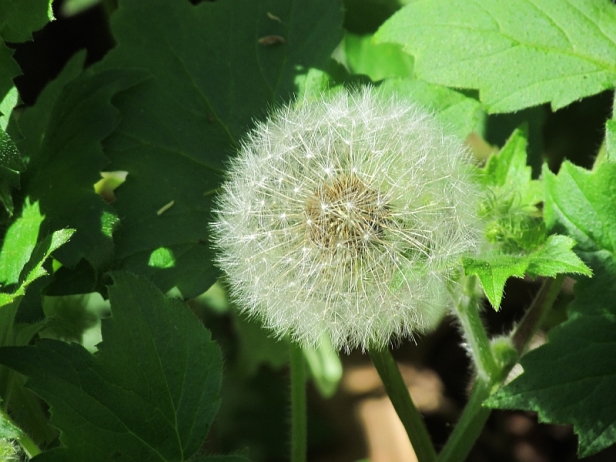
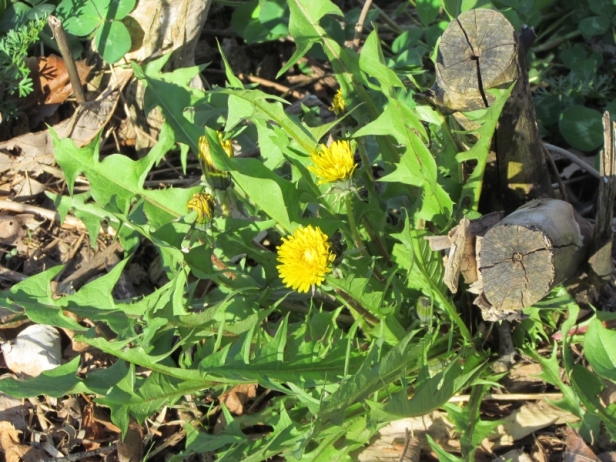
I never thought that there was that much to learn about dandelions! I never understood how a cheerful yellow flower like them became the bane of lawns either. Must have been a really slick marketing campaign to convince people that they should hate dandelions.
I agree with you 100%. I’d rather see such blooms than a lawn that looks like astroturf!
Another advantage of Dandelions- their taproot brings up nutrients from deep in the soil for shallower-growing plants to share.
Beautiful photographs! I saw a Dandelion last week and then I knew Spring had arrived!
That’s a great sign, Prairiebirder!
We once made dandelion wine but we didn’t drink much of it as they came from roadside verges and we were worried about pollution because there was lead in the petrol, in those days.
That’s an excellent point, Tootlepedal- I wouldn’t want to consume any plant that may have been exposed to some nasty stuff. Look for them in a field away from human endeavors!
I have been looking into herbal medicine and found it a real eye opener related to the dandelion. I enjoyed the information and the photos are outstanding. Thank you for sharing.
Thanks, Charlie! I wanted to go out and eat a Dandelion after reading up on it!
Just dug up a bunch today. My yard has been organic for about a decade. Once in a while when I’m out of leafy greens and desperate… To me the leaves are too bitter for salads. Cooking shrinks them down to nothing.
The taste apparently is different…the leaves are best when they’re young from what I’ve read!
I think the blossoms are very pretty. I grow my share!
Montucky, we all have a green thumb when it comes to this plant! 😉
Just think-in medieval cottage gardens they dug out grass so things like dandelions would grow instead. How times have changed!
That’s hilarious! Maybe they knew what they were doing back then, eh?
A lovely post about a plant that I usually dig up without a second thought! 🙂 Beautiful photos as well.
Many thanks, Jo!
Come to think of it, a dandelion was noticed in my garden in January. 🙂 Thanks for teaching me about the interesting etymology of its name. The second and fifth pictures are beautiful! I will definitely let my neighbor know that I’m letting dandelions be this year.
I noticed a few blooming last winter too, Barbara. Now that’s a hardy flower!
Hi. I also admire the Dandelion and shake my head at lawn-lovers who work so hard to get rid of them. I think I like the seed stage the best. Jane
I agree Jane! The seed heads are fascinating to look at. What geometry!
When we had Guinea Pigs, they thought the dandelions were like candy–flower and all!
I had Guinea Pigs too at one time- wish I would have known they liked these! 🙂
Who knew the humble dandelion had such a rich history? Thanks for sharing.
Thanks, Patti!